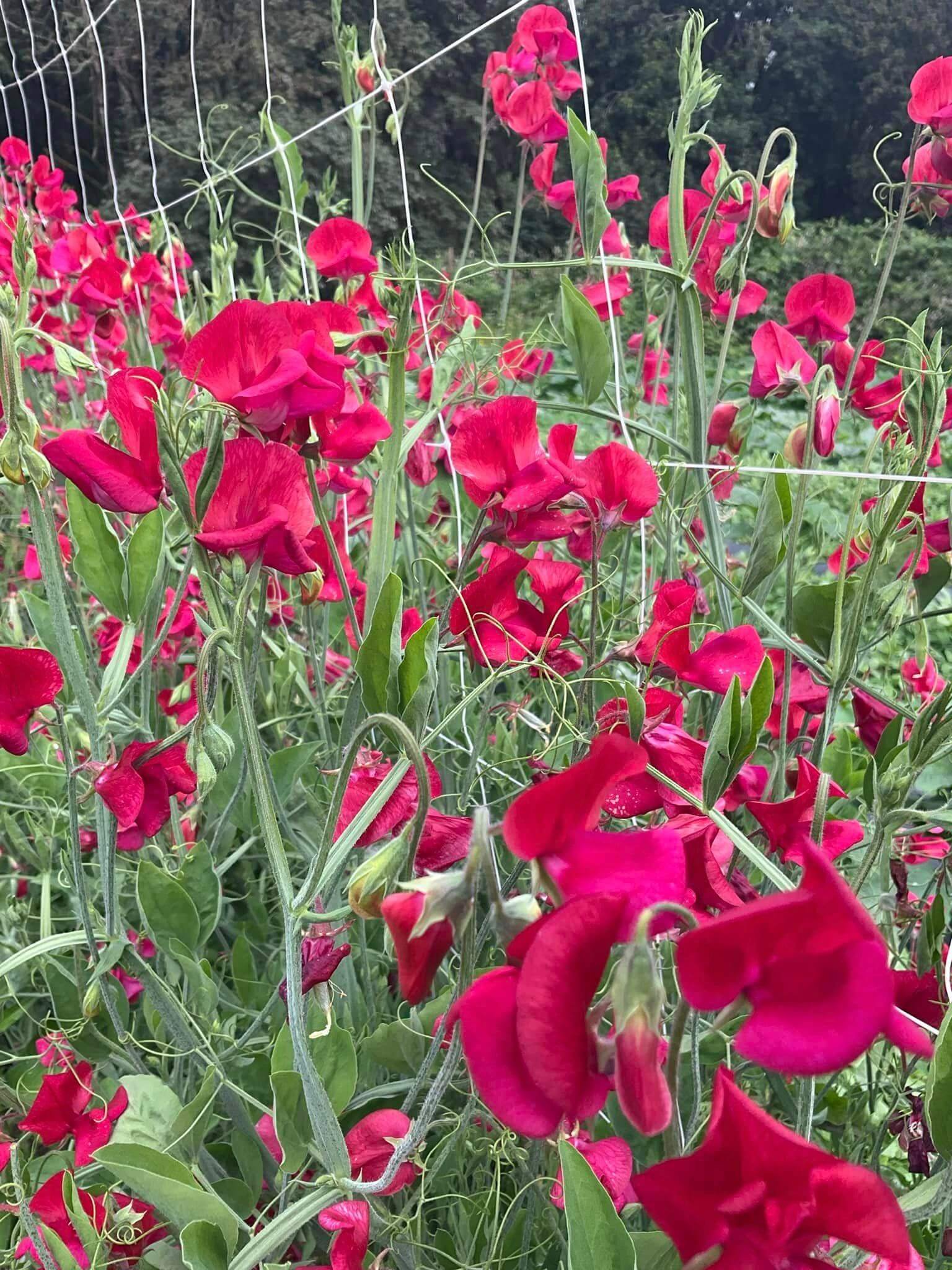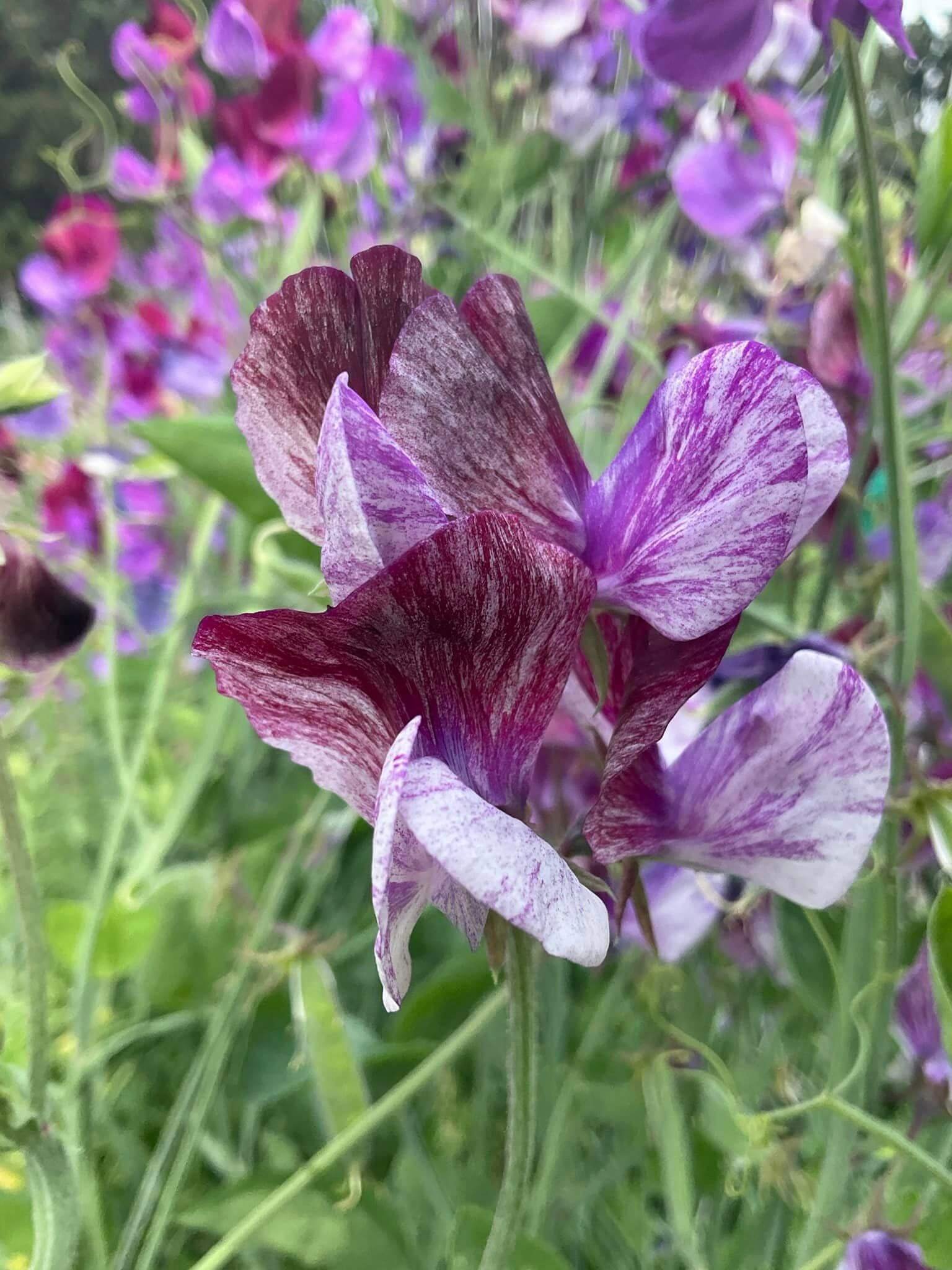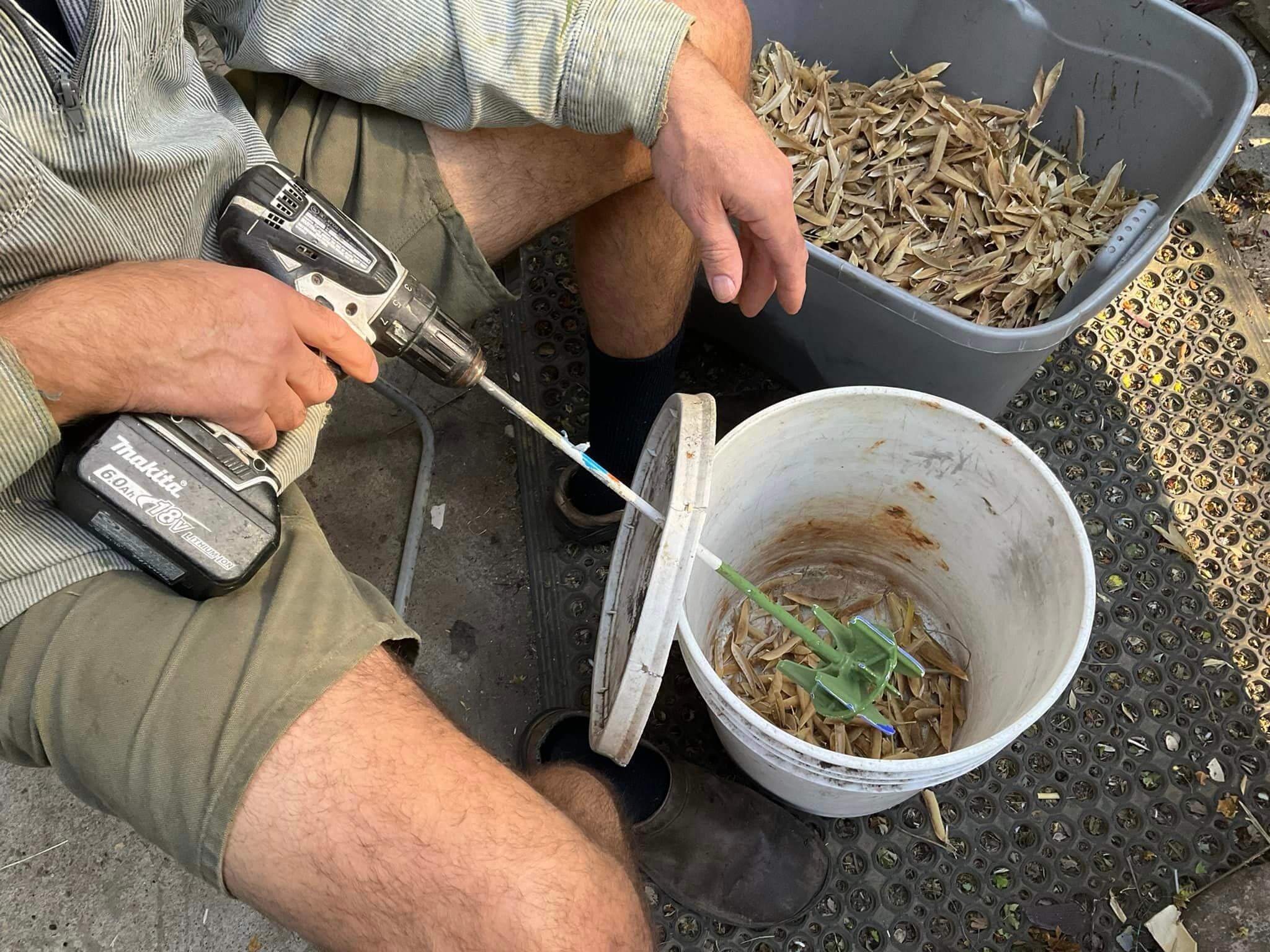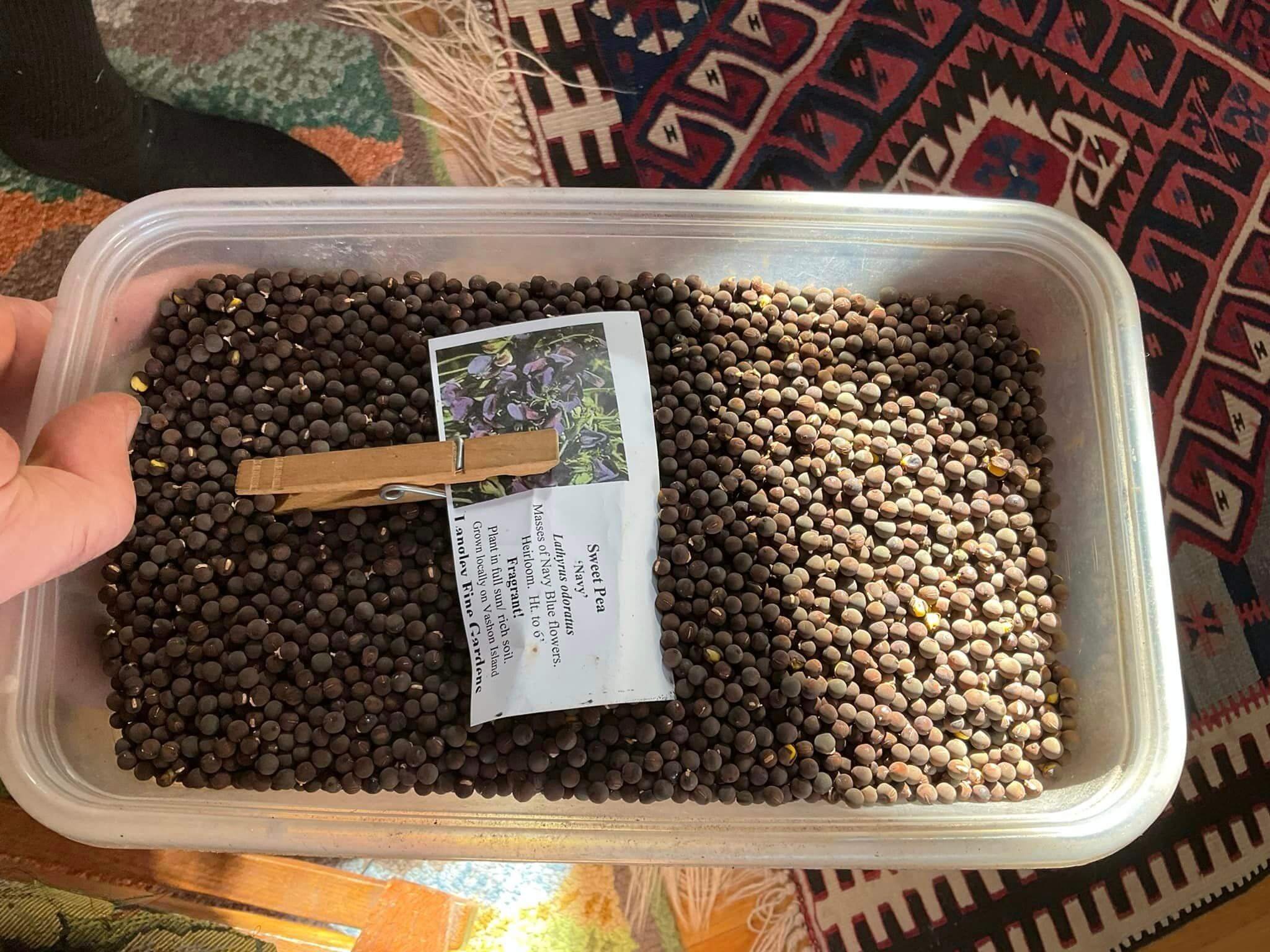Labor of Love
The Seed-growing, Collecting, and Cleaning Process
Matt tending the sweet pea vines: red one is Henry Eckford, purple and maroon bicolor sweet pea is Cupani
The seed-growing, collecting, and cleaning process for our fragrant, heirloom Sweet Peas begins in January and ends in October every year.
Flora Norton
It is a laborious process and you might wonder why a farmer would go through all the hours of work? Well. . .we love the work and it is fun and rewarding!
King Edward VII
Also, most of the varieties that we grow and collect the seed from are not available for a realistic price or are simply not available for sale at all. If we didn't grow and collect the seed, you, the Sweet Pea lover, would not be able to purchase these varieties for growing
in your garden.
Prince Edward of York
Over the 27 years that we have been selling Sweet Peas, we have noticed the trends shifting from super fragrant heirloom varieties to hybrids with less fragrance but bigger blooms and longer stems. The new varieties are really fun and much easier for bouquet making, but they lack that strong heirloom Sweet Pea fragrance that is that particular mix of orange blossoms, honey, jasmine, and cloves.
Blue Ripple
We begin our Sweet Pea growing season by planting the seeds into little trays that go into a greenhouse where the heat is kept at about 35 nights and as warm as Mother Nature allows a greenhouse to be in the winter when the sun is out. Sometimes 70 degrees! The point is, don't let them freeze!
April In Paris King’s High Scent
We transplant into 4" pots in mid-February, grow them above freezing until they reach 6" tall, move them outside to toughen up, and then begin delivering them to our retailers in mid-March.
Henry Eckford
We plant our own, for seed saving, out into the field in May because that is when we have time. We would prefer to plant them in April but we are swamped with greenhouse work and deliveries then.
Unwins Butterfly
We plant our own, for seed saving, out into the field in May because that is when we have time. We would prefer to plant them in April but we are swamped with greenhouse work and deliveries then.
Cupani
We use drip tape for efficient irrigation, Sweet Peas love rich soil and even moisture, we fertilize with an organic fertilizer mix.
Painted Lady
Today, he began the seed cleaning process and will spend about 40 hours just on the Sweet Pea cleaning. I tend to be in charge of all other flowers and tomato seed cleaning and packaging, although Matt is my main seed collector for all other flowers and veggies.
Mrs. Collier
We will leave the bins of seed to dry out for a few more weeks, in our house. Yes, the farm takes over our inside house life, lol! Seed bins everywhere.
Lord Nelson Navy
But, you can't leave seed bins in garden sheds, garages, etc. The mice will find them and they love all manner of seeds, particularly Sweet Pea seeds.
Dried sweet pea pods
After they are dry, (hit the Sweet Peas with a hammer, if they shatter, they are dry, if they smoosh, they still have moisture) package them into little paper or plastic bags, seal tightly, label them, and store them in the refrigerator.
Seeds fall
After they are dry, (hit the Sweet Peas with a hammer, if they shatter, they are dry, if they smoosh, they still have moisture) package them into little paper or plastic bags, seal tightly, label them, and store them in the refrigerator.
Sifting the pods
The eggs hatch out when the seeds are dry and the larvae burrow through the dry pods into the dry seeds and eat the seed embryo. They need warmth for this.
More sifting
The eggs hatch out when the seeds are dry and the larvae burrow through the dry pods into the dry seeds and eat the seed embryo. They need warmth for this.
Sweet pea seed
The main requirements for seed growing and collecting, cleaning, and packaging are a love of plants and keen powers of observation. Plus, you save so much money and you can grow unusual plants that are not always available for sale.
You can do this!
















